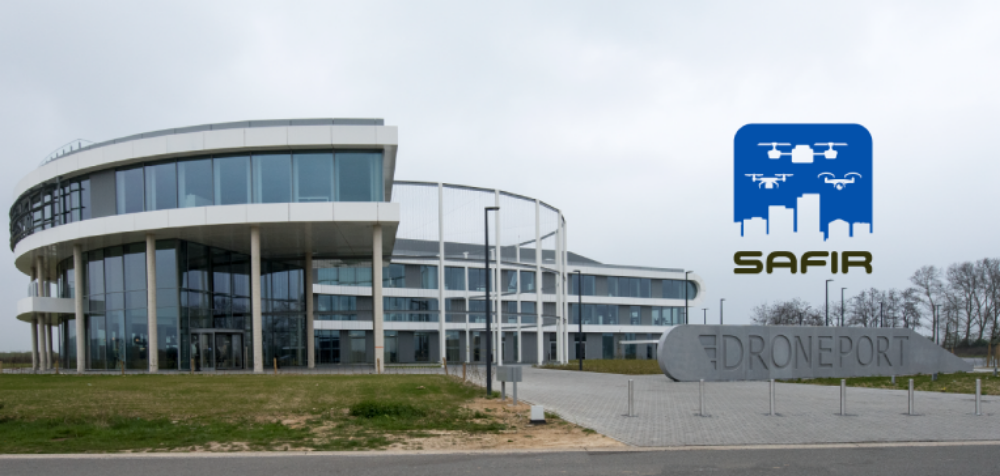The U-space SAFIR consortium, a group of 13 public and private organisations, hosted an open day on September 5th at the DronePort, Sint-Truiden and successfully showcased integrated drone traffic management for a broad range of drone operations. European Commissioner for Transport Violeta Bulc came to see the progress made.
Drones continue to capture the imagination and are now playing a vital role in a range of different industries. To safely integrate drones into the airspace, the U-space SAFIR consortium is working to demonstrate how technology is supporting the safe deployment of a multitude of drones in a challenging airspace environment. Three U-space service providers (USSP) and one air navigation service provider (ANSP) have integrated their services to control the airspace collaboratively. Parcel delivery flights, aerial survey, medical inter-hospital flights and emergency prioritisation featured in the test scenario.
The demonstration is among several demonstration projects taking place within the framework of SESAR Joint Undertaking – the entity responsible for coordinating all EU research and development activity in air traffic management. Together these projects are supporting the European Commission’s U-space vision of ensuring safe and secure integration of drones into European airspace.
Johan Decuyper, CEO skeyes, said:
“Our participation in U-space projects such as SAFIR serves a twofold objective: firstly, it allows us – in our current role as an Air Navigation Service Provider – to gradually develop and demonstrate how manned and unmanned air traffic can safely operate in the same airspace environment. Secondly, it gives us the opportunity to explore and start building new business activities in the domain of unmanned aviation in accordance with safety of air traffic, our main priority.”
Marc Kegelaers, CEO of Unifly, said:
“U-space as a concept has been launched by Commissioner Bulc and her team less than three years ago. They wanted to bring the drone industry, regulators and ANSPs together to reach a common goal: the safe integration of drone into the airspace. The extremely ambitious SAFIR project is a clear example of how far U-space has evolved and how valuable that vision was.
In a true cooperation among 13 partners, we demonstrate that the technology exists to make the widespread use of drones for a variety of applications in a safe manner possible. The results of this demonstration project will help the relevant authorities build better regulations to enable the creation of a common European drone services industry. We are extremely proud to have been given the opportunity to be the lead in such a prestigious project.”
Violeta Bulc, European Commissioner for Transport, who attended the open day, said:
“Drones mean innovation, new services for citizens, new business models and economic growth. I am delighted to see the progress made by partners through demonstrations like those taking place here today in advancing U-space, and the safe and secure integration of drones in Europe’s airspace.”
SAFIR stands for Safe and Flexible Integration of Initial U-space Services in a Real Environment. Led by Unifly, the SAFIR consortium consists of the following organisations: Amazon Prime Air, Aveillant, C-Astral, DronePort, Elia, Explicit, Helicus, the Port of Antwerp, Proximus, SABCA, skeyes and Tekever.
SAFIR has been selected by Single European Sky ATM Research Joint Undertaking (SESAR JU) to demonstrate integrated Drone Traffic Management for a broad range of drone operations in Belgium. The goal of the SAFIR project is to contribute to the EU regulatory process for drones and drive forward the deployment of interoperable, harmonised and standardised drone services across Europe.
U-space is an enabling framework that will evolve over time to facilitate access to all classes of airspace and operating environments while addressing an appropriate interface with manned aviation and air traffic control. When fully deployed, a wide range of drone operations will be possible thanks to a sustainable and robust European ecosystem that is globally interoperable.
The consortium is co-funded by the SESAR JU within the framework of the EU’s Connected Europe Facility.
Source: Press Release

